Turtles come in all shapes and sizes. Some species of turtles are very small and only measure a few inches in length, while others can be the size of a small car!
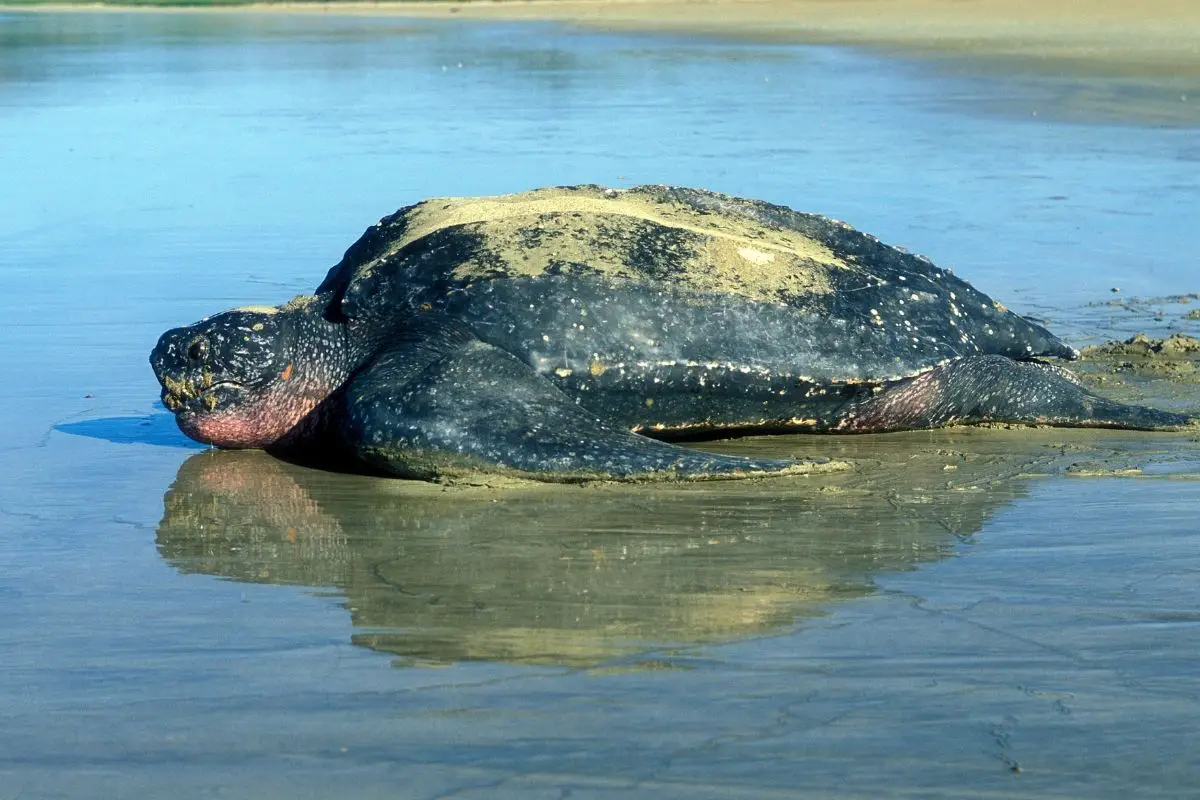
There are over 350 species of turtles in the world, which means there’s plenty of variety out there.
Some of the turtles that exist today (as well as several that have long gone extinct) are astonishingly huge, weighing thousands of pounds and being large enough to ride.
In this guide, we’ll go over some of the biggest turtles in the world, both ones that exist today and ones that have been lost to time.
Galápagos Giant Tortoise
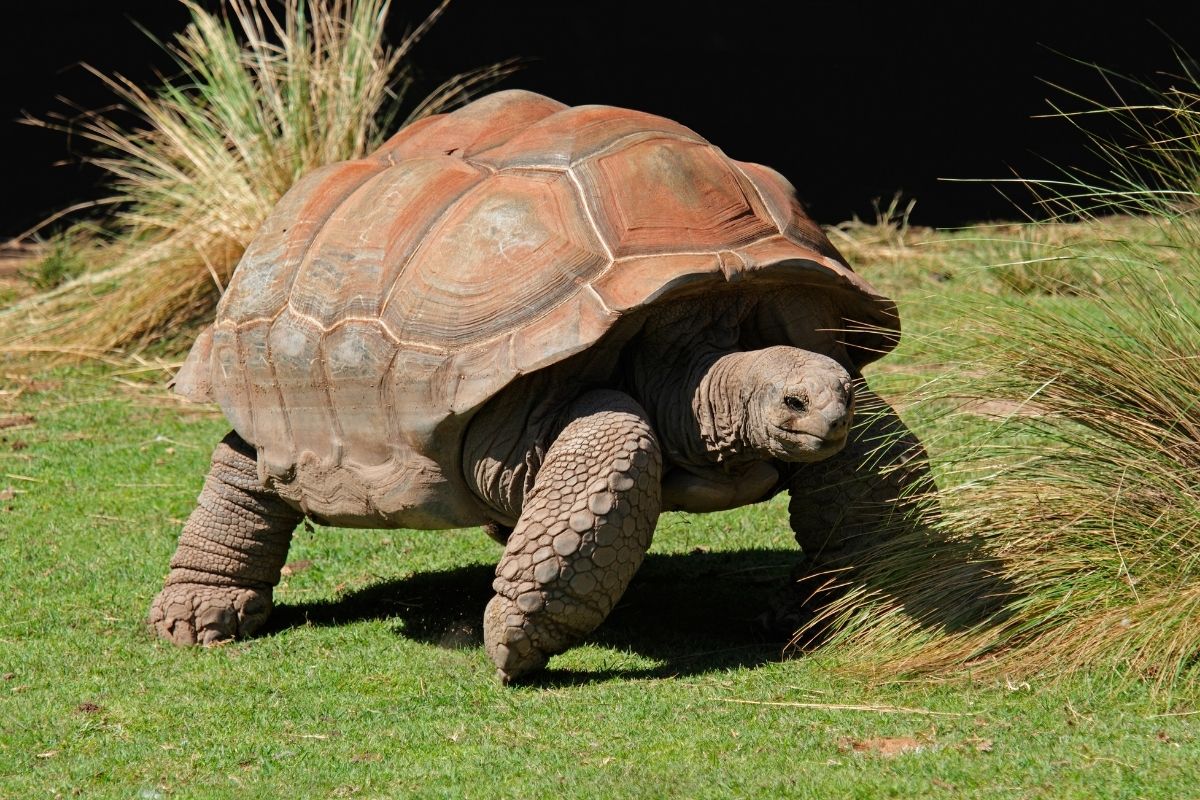
The first turtle on our list is the Galápagos giant tortoise – one of the largest reptiles alive today.
The giant tortoise comes from the Galápagos Islands, a series of volcanic archipelagos, where they live in arid lowlands and humid scrubland.
They’re only found in the wild on these islands, which gives them their name.
There are 12 living subspecies of Galápagos giant tortoises, which populate different islands in the Galápagos.
These subspecies are mostly categorized into one of three shell shapes – domed, saddleback, and intermediate (a mix between the two).
These amazing creatures grow up to 6 feet long and weigh around 880 lbs. Their shells are made of tough keratin, an organic substance that is also found in human fingernails.
Giant tortoises spend most of their days lounging around, enjoying the sun. Because of the dry climate on the islands, it can be hard to find vegetation on ground level.
However, due to their size, Galápagos giant tortoises are able to reach the leaves of small trees and tall plants – for example, the saddleback has specifically evolved for this. It can reach much higher than most tortoises.
When it does rain, these guys like to get wet; they will relax in muddy puddles and cool off by resting their shells in the water.
Two of the most famous Galápagos giant tortoises are Lonesome George (the last remaining Pinta Island Galápagos giant tortoise who died in 2012) and Charles Darwin’s tortoise Harriet (a tortoise from Santa Cruz Island who lived to 176 years of age and is commonly thought of as one of the oldest tortoises ever).
Leatherback Sea Turtle
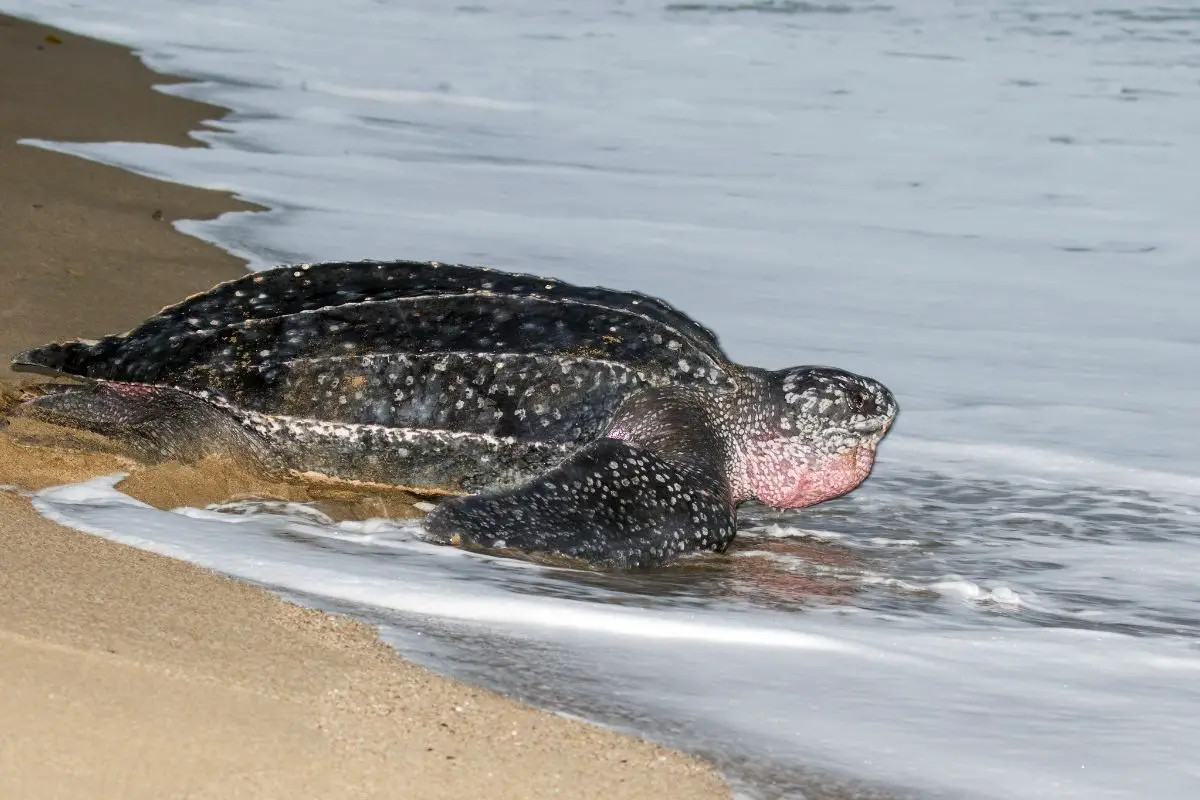
The leatherback sea turtle is another massive type of turtle, but one that lives in the ocean instead of on land.
Leatherbacks make the Galápagos giant turtle seem small, with males reaching weights of up to 2200 lbs and females reaching 1800 lbs – that’s as much as half a car!
They can also reach lengths of more than 7 feet long, with a teardrop-shaped body that allows them to travel in the water much faster than their bulky size might suggest.
Unlike most turtle and tortoise species, leatherbacks have soft, flexible shells. Its leathery appearance and texture are what give the leatherback its name.
Leatherbacks can be found all over the world, from the freezing waters of the Arctic circle to the warmer subtropical waters around Australia and Indonesia.
They can travel at 35mph in the water, which makes them the fastest non-avian reptiles in the world.
As well as being great swimmers, they are also powerful divers; leatherbacks are able to dive as far as 4000 feet, with diving sessions lasting for up to an hour on some occasions.
Leatherback sea turtles are what are known as gelatinavores – this means that they only eat jellyfish and some similar aquatic invertebrates.
Unfortunately, the number of leatherbacks in the wild has been rapidly decreasing in recent years due to an increase in hunting, water pollution, and the destruction of their habitat and nesting sites.
It’s estimated that there are as few as 25,000 of these turtles worldwide, and they are classed as endangered.
Alligator Snapping Turtle
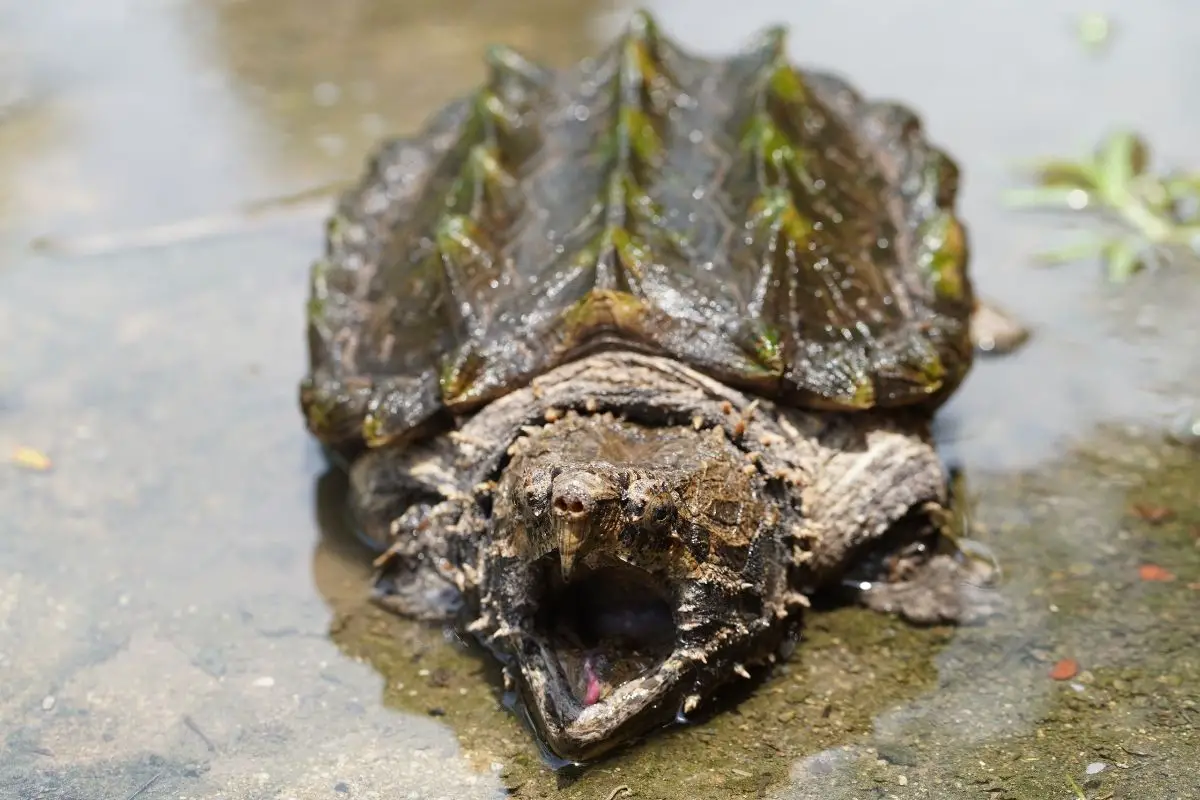
Land turtles (which are distinct from tortoises) are typically smaller than most turtles and tortoises.
With that said, however, there are still some species of land turtles that dwarf the competition – for example, the alligator snapping turtle.
The alligator snapping turtle grows up to 3 feet long and weighs about 250-300 lbs.
They are most commonly found in freshwater areas of the southern USA, with populations spanning from Texas to Florida to Iowa.
Alligator snapping turtles are considered to be the heaviest freshwater turtle in the world.
While the alligator snapping turtle is mostly carnivorous, they are opportunistic predators and will eat pretty much anything that gets close enough.
It lures in its prey with a worm-like appendage on its tongue, lying still and twitching the lure until something comes to investigate.
Then, it lunges its head forward and grabs its prey with its extremely sharp and powerful jaws (which have a biting force of 1000 lbs!).
Archelon
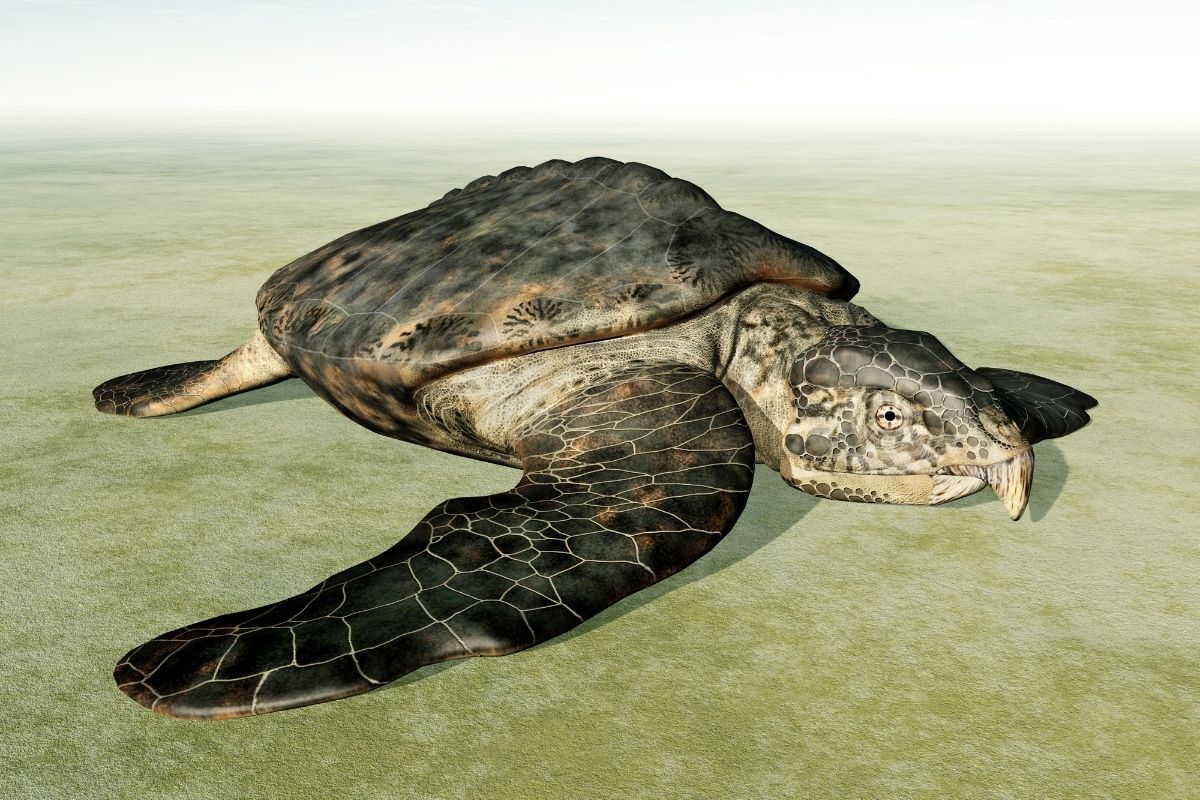
The archelon is a species of turtle that went extinct millions of years ago and the largest species of turtle that ever lived. The archelon was absolutely massive, measuring over 15 feet long and weighing around 5000 lbs.
There is a lot that isn’t known about archelon as it went extinct long before humans even existed, but there are still things that we can learn about them from fossils.
They had soft, leathery shells, similar to leatherbacks, with a long head and a hooked beak. Archelon was a carnivore and probably ate crustaceans and mollusks.
The largest archelon specimen is known as Brigitta, which measures 15 feet in length, 13 feet in width, and would have weighed about 4900 lbs.
Frequently Asked Questions
What Is The Largest Turtle?
The largest turtle to ever live is the archelon, which measured 15 feet long and weighed almost 5000 lbs.
The largest turtle that still exists today is the leatherback sea turtle, which is around half the size at 7 feet long and just over 2000 lbs in weight.
In addition to being the largest living turtle, the leatherback is also the fastest non-avian reptile and the largest reptile that isn’t a crocodile in the world.
What Do Turtles Eat?
Turtles eat a variety of things. Most turtle species are omnivores, with their diets consisting of plants, insects, small mammals, and lizards.
Every species of tortoise is a herbivore, although some tortoises have been known to eat other animals when low on food. Some species are fully carnivorous, such as the alligator snapping turtle.
Others have diets that don’t fit with typical categories – for instance, the leatherback sea turtle is a gelatinavore with its diet consisting almost entirely of jellyfish.
How Long Do Turtles Live?
A turtle’s lifespan varies with different species, and some species of turtle live for far longer than others.
Certain factors can also affect the age of a turtle, including its diet, environment, and whether it lives in captivity or in the wild.
Some species live far longer than others – for example, the Galápagos giant tortoise is well-known for its long life.
The oldest turtle ever recorded is a giant Seychelles tortoise known as Jonathan, who is more than 190 years old and still alive today.
Final Thoughts
Turtles are incredible animals, and some species can also be absolutely huge.
While gigantic species like the archelon have been extinct for millions of years, there are still several species of turtles that are bigger than humans and are even large enough for a person to ride.
There is so much to know about turtles, and this article only scratches the surface of how fascinating the many species of turtles are.
So now that you’ve taken a look at some of the largest turtles ever, why not stick around and learn some more about these amazing animals? You’re sure to learn something great!
